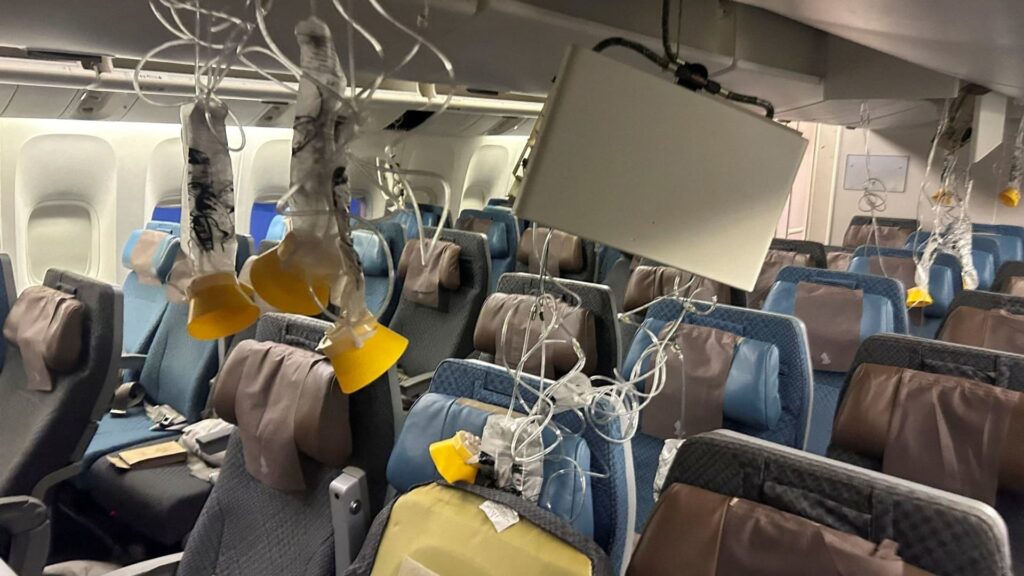
Singapore Airlines ranked as the No. 2 international airline, according to the Bounce 2023 report.
Nurphoto | Nurphoto | Getty Images
Singapore Airlines altered its in-flight seatbelt rules and changed at least one flight route following Tuesday’s turbulence incident which killed one and hospitalized dozens more.
The airline will no longer provide hot drink and meal services when the seatbelt sign is on as part of its new, “more cautious approach” to turbulence, it said in a statement to CNBC.
“SIA will continue to review our processes, as the safety of our passengers and crew is of utmost importance,” it said.
The airline added that crew will continue to secure loose items and equipment and advise passengers to return to their seats and wear their seatbelts.
The interior of Singapore Airline flight SQ321 is pictured after an emergency landing at Bangkok’s Suvarnabhumi International Airport, Thailand, May 21, 2024.
Stringer | Reuters
Tuesday’s SQ321 London-Singapore Boeing 777-300ER flight, carrying 211 passengers and 18 crew, was forced to divert to Bangkok for an emergency landing after it encountered severe turbulence over Myanmar, causing passengers and crew to be thrown around the cabin.
The daily route has since remained in service, but flight data shows it has diverted away from part of Myanmar where the turbulence occurred.
According to FlightRadar 24, the airline’s two completed flights since the incident have flown south of Myanmar, over the Bay of Bengal and the Andaman Sea.
The airline did not immediately respond to CNBC’s request for comment on the alterations.
A 73-year-old British man died of a suspected heart attack during Tuesday’s incident. A further 104 passengers were injured, a press officer for Bangkok’s Samitivej Srinakarin Hospital told the Associated Press.
As of Thursday, around 20 passengers remained in intensive care with head and spinal injuries, the director of the hospital said in a press conference, according to AP.
Turbulence-related incidents are the most common type of accident suffered by commercial airlines, according to the U.S. National Transportation Safety Board. This covers major U.S. airlines, as well as cargo aircraft and regional carriers.
Severe injuries from turbulence are rare, however, with 163 cases recorded between 2009 and 2022, 129 of them crew members, according to the NTSB.
The Aviation Safety Network has recorded seven incidents for Singapore Airlines, last logging accident fatalities for one of the company’s flights in October 2000, when 83 people were killed when the plane crashed into construction equipment at Taipei’s main airport.
— CNBC’s Sophie Kiderlin contributed to this report.






